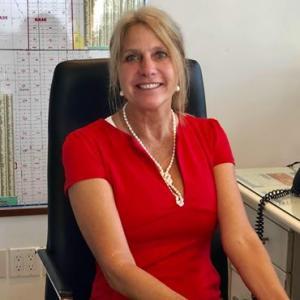- Home
- General Non-Fiction
- Communicate With Courage Reviewed by Michelle Malsbury of Bookpleasures.com
Communicate With Courage Reviewed by Michelle Malsbury of Bookpleasures.com
- By Michelle Kaye Malsbury
- Published December 25, 2022
- General Non-Fiction
 Michelle Kaye Malsbury
Michelle Kaye Malsbury

Reviewer Michelle Kaye Malsbury:
Michelle was born in Champaign, IL. Currently, she resides in Asheville, NC
and is in her second year of doctoral studies at Nova Southeastern
University in Ft. Lauderdale with specialization/concentration in
conflict resolution and peace studies. She has over six hundred
articles published on the web and one book published thus far with
many more in the wings. Hobbies include; reading, writing, music, and
playing with her Australian Cattle Dog, Abu.

Author: Michelle D. Gladieux, Author
Publisher: Penguin Random House
ISBN: 978-1-5230—0312-9
Michelle Gladieux, author of Communicate With Courage, is a graduate of Purdue University (MS).(2022. P.159) She works as an executive coach, seminar presenter, instructional designer, and educator.
Michelle’s happy spaces include the beach and a lake in Indiana where she resides or at a music festival.
Michelle refers to this book as her bravery factory of sorts where risks are converted into rewards. (2022, paraphrase, p.1) To which she adds that “Great communication is a full-body, full-mid, and full- heart effort.”
Gladieux supplements this book with pertinent exercises and challenges that are slanted at helping
people work through fear and come out better on the other side. Fear she says is a type of protective
reply that hides our challenges. “Our tricks trick us. They can become habits before we know it.” (202,
p.9) How can you change up this dynamic?
“If you want people to know that you are trying to change, tell them!” (2022, p.18) “If you want them to
see a different, evolved you, publicize what you plan to change.”
“If you shy away from risk, you shy away from potential. Your legacy won’t let you live on with as much
positive impact, and what folks remember about you will lack lift that may be carried forward.” (2022,
p.31)
“Your mindset and outside influences attempt to dictate how you see yourself and how you
communicate with the outer world. There’s a lot of feedback – some helpful, and some really
not—coming at you nonstop.” (2022. P.41)
“Communicate With Courage was built to help you win To possess effective communication skills we
need to face the fact that when we act on bias, we lose.” (2022, p.65) “As you gain and use power, it’s
too your advantage to become known for ethical use of it. Be a person of your word. Let your deeds
show your thinking process doesn’t intentionally leave out others who are not like you.” (2022, p.73)
“Differences make us stronger as a species, but biological and cultural diversity can limit our ability to
understand one another. Left unaddressed perhaps because someone rationalized it as no important or
addressed clumsily or with ill intention, conflict becomes a damaging force. “ (2022, p.81)
I do not want to give the entire book away but suffice it to say that there is a lot of important learning
we can derive from this book. I enjoyed it and believe you will too.
